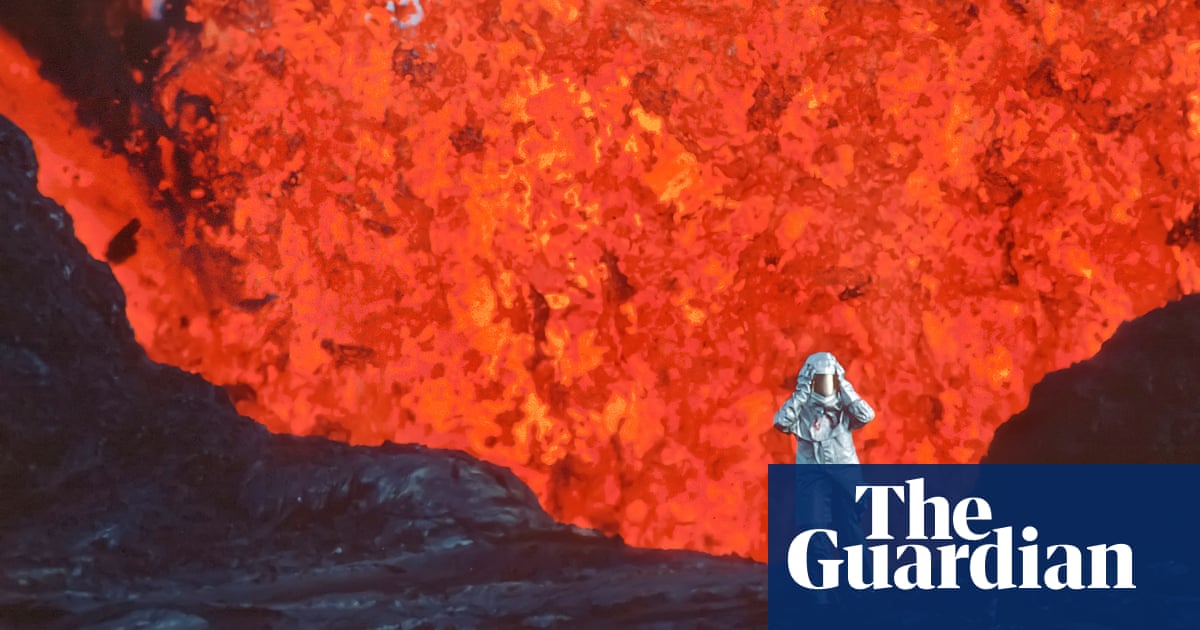
Volcanoes are the homes of gods, language tells us – across most of Europe, people who may never have laid eyes on one call them after the smoking forge of Vulcan, Roman god of fire and smithery. (In the tectonic hotspot of Iceland, where people live cheek-by-jowl with 130-odd volcanoes, they are simply “fire mountains”.) Even in our unenchanted modern age, they are capable of inspiring a kind of divine madness in devotees such as the French volcanologists Katia and Maurice Krafft, who died in an eruption on Japan’s Mount Unzen in 1991. In recent documentaries by Werner Herzog and Sara Dosa, the Kraffts appear astronaut-like in eerie silver fire-proximity suits, silhouetted against glowing torrents of the Earth’s molten innards. “If I could eat rocks, I’d stay in the volcanoes and never come down,” Maurice proclaims.
Tamsin Mather, professor of Earth sciences at Oxford University, is an altogether more sober kind of scientist. Adventures in Volcanoland, the result of two decades of painstaking international research, is structured around pragmatic questions such as “What messages do volcanic gases carry from the deep?” But its roots lie in childhood memories of perhaps the most famous volcano of all: Vesuvius, and the plaster casts of the townspeople it killed in Pompeii in AD79. “It was the fear and distress twisted into the bodies of the people it claimed that stayed with me,” Mather writes. This isn’t simply a geological study, it’s a book about the entwined destiny of humans and volcanoes: how they helped create the conditions for our life on Earth, how they have threatened and destroyed communities, and how they point to the consequences of our current planet-destroying behaviours.
It’s also the story of people’s long attempts to work out what these fiery, restive mountains really are: the lair of gods or spirits, portals guarding hidden treasures or, in Mather’s own phrase, “the tip of a great unseen subterranean plumbing system”. Some theories have proved more resilient than others. In 1538, a gold-seeking Spanish friar was lowered into a volcanic crater in Nicaragua in a basket, with a helmet, cross and flask of wine to see off falling rocks, demonic entities and attacks of nerves respectively. His mission ended in disappointment, but that didn’t stop the local church hierarchy petitioning the emperor for 200 enslaved people to tunnel into the crater and extract the riches its lake of lava surely concealed.
Scientific observation may have moved on somewhat, but Mather is clear on the limits of our knowledge and the extent to which the inner workings of our planet – which volcanoes provide a window on to – remain a matter of speculation. Of the 6,400km from the surface to the centre of the Earth, she says, “even today our deepest mine shafts are only a few kilometres deep, and our deepest boreholes just over 12km”: humans have literally barely scratched the surface of our home planet. Even a unified theory of plate tectonics, and understanding of the movements of the mantle – the layer of viscous rock between the planet’s molten outer core and solid crust that feeds magma to volcanoes – dates only from the 1960s. “Our current best theory,” Mather writes, “imagines the solid mantle creeping slowly beneath us in vast circulations, rising and sinking, and keeping rough pace, as it happens, with the growth of human fingernails.”
From these continental-level movements, Mather takes us, Alice in Wonderland style, to “the atomic-scale language of crystals, liquids, bonds and bubbles”. The varying chemical composition of magma dictates the violence of the eruptions it causes and the broader impacts – from lurid sunsets to crop-killing chill and haze – of the volcanic plumes that result. But it’s not just destruction. From cycling water between the Earth’s interior and exterior to playing a key role in carbon levels, volcanism is one of the pivotal planetary systems that has kept us alive so far. Now the study of its climate-altering effects in deep history offers a sobering glimpse into our possible future. “We should hear alarm bells echoing down to us through geological time,” Mather writes. This detailed, impeccably researched study hints at the kind of divine intervention we may soon need.
after newsletter promotion
